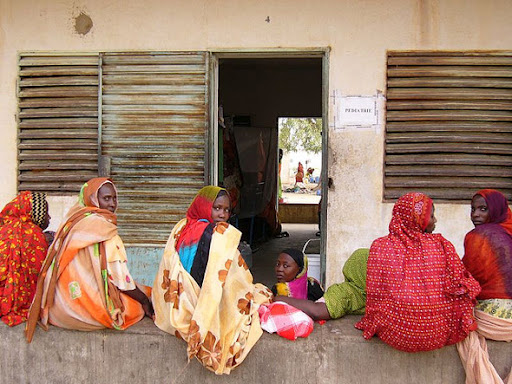Showing posts from category *Main.
-
Development Seeking its Place Among the Three “Ds”
›December 15, 2009 // By Dan Asin“By one count, there are now over 140 goals and priorities for U.S. foreign assistance,” Senator John Kerry said during the nomination hearing for USAID Administrator-designate Rajiv Shah. If Shah is confirmed, his principal tasks will be moving development out from the shadow of defense and diplomacy and bringing definition to USAID’s mission.
“USAID needs to have a strong capacity to develop and place and deploy our civilian expertise in national security areas,” Shah said at his nomination hearing. USAID “has a responsibility to step up and offer very clear, visible, and understood strategic leadership,” as well as clarify “the goals and objectives of resources that are more oriented around stability goals than long-term development goals.”
A difficult task—and whether Shah wants it or not, he’ll get plenty of help from State, the Obama Administration, and Congress.
State Department Reviews Diplomacy and Development
The State Department’s Quadrennial Diplomacy and Development Review (QDDR)—launched in July by Shah’s impending boss, Secretary of State Hilary Clinton—will certainly inform his USAID vision. Modeled after the Defense Department’s Quadrennial Defense Review (QDR), the QDDR is designed to enhance coordination between USAID and State.
Anne-Marie Slaughter, director of policy planning at the State Department and co-leader of the review process, laid out the QDDR’s specific goals at a recent event hosted by the Center for American Progress:- Greater capacity for, and emphasis on, developing bilateral relationships with emerging nations, working within multilateral institutions, and working with non-state actors
- Capability to lead “whole-of-government” solutions to international challenges
- More effective coordination between top-down (diplomatic) and bottom-up (development) strategies for strengthening societies
- Greater capacity to launch on-the-ground civilian responses to prevent and respond to crises
- Flexible human resource policies regarding the hiring and deployment of contractors, foreign service officers, and development professionals
Obama Administration, Congress Also Join In
Details on the Presidential Study Directive (PSD) on Global Development Policy—outside its broad mandate for a government-wide review of U.S. development policy—are similarly sparse. The directive’s fuzzy parameters leave open the potential for its intrusion into the QDDR’s stated objectives.
But from what little is available, both the QDDR and PSD appear to be part of complementary efforts by the Obama administration to elevate development’s role in U.S. foreign policy, using whole-of-government approaches.
Lest Congress be left out, each chamber is working on its own development legislation. Senators John Kerry and Richard Lugar’s Foreign Assistance Revitalization and Accountability Act of 2009 (S. 1524) seeks “to strengthen the capacity, transparency, and accountability of United States foreign assistance programs to effectively adapt and respond to new challenges.” The act would reinforce USAID by naming a new Assistant Administrator for Policy and Strategic Planning, granting it greater oversight over global U.S. government assistance efforts, and strengthening its control over hiring and other human resource systems.
Congressmen Howard Berman and Mark Kirk’s Initiating Foreign Assistance Reform Act of 2009 (H.R.2139) would require the president to create and implement a comprehensive global development strategy and bring greater monitoring and transparency to U.S. foreign assistance programs.
Successful legislation in the Senate and House could pave the way for the reformulation of the Foreign Assistance Act of 1961, whose message has been rendered complicated and sometimes contradictory by decades of amendments.
And all these ambitious efforts are complicated by the involvement of 25 independent government agencies in U.S. foreign assistance—a formidable challenge to any administrator.
Photo: Courtesy of the USDA. -
Tackling the Biggest Maternal Killer: How the Prevention of Postpartum Hemorrhage Initiative Strengthened Efforts Around the World
›On Friday, November 20th, 120 representatives from the maternal health community, the U.S. and around the world, gathered for an all day meeting at the Woodrow Wilson International Center for Scholars to discuss the report, Tackling the Biggest Maternal Killer: How the Prevention of Postpartum Hemorrhage Initiative Strengthened Efforts Around the World. This report describes the challenges and successes of the U.S. Agency for International Development (USAID) funded Prevention of Postpartum Hemorrhage Initiative (POPPHI).
The five-year POPPHI project was executed through the support of many partners whose main goal was to catalyze the expansion of active management of the third stage of labor (AMTSL) worldwide. The conference convened experts and advocates in the field of maternal health, to share best practices, new innovations, and future challenges for tackling maternal health’s leading killer: postpartum hemorrhage (PPH). Panelists included POPPHI field partners such as International Federation of Gynecology and Obstetrics, The International Confederation of Midwives, the World Health Organization, and international researchers.
Preventing Postpartum Hemorrhage: AMTSL
“We need to work on women postpartum–after birth we leave them,” argued Deborah Armbruster, POPPHI Project Director. Due to the fact that many women in the developing world give birth at home or in local clinics that lack the sufficient resources to prevent postpartum hemorrhaging, approximately 132,000 women die annually. Fortunately, effective and feasible interventions such as those established by POPPHI have been proven to save lives.
Active management of the third stage of labor (AMTSL) includes three factors that, when used together, can avert postpartum hemorrhage, including:1. Administration of uterotonic drugs (including oxytocin – the most preferred drug)
POPPHI’s “BOLD” Approach
2. Controlled cord contraction
3. Uterine massage after the delivery of the placenta
In collaboration with its partners, POPPHI implemented country-level and global programs to scale up AMTSL. Driven by the “BOLD” approach, Armbruster described how the initiative provided overall frameworks and approaches for strengthening PPH interventions by Building on evidence, Obtaining consensus, Linking partners, and Demonstrating to policymakers AMTSL’s feasibility.
Additionally, POPPHI provided learning materials such as toolkits, fact sheets, posters, and guides that were used to train providers and increase their use of AMTSL. A pilot project on Uniject (a single use needle pre-prepared with oxytocin) was also executed in Mali. Uniject was shown to be acceptable and successful with birth attendants there, and the study is now being replicated in Honduras.
Voices from the Field
Representatives from Argentina, Bangladesh, Ghana, Guatemala, Peru, and Mali presented their country results with the POPPHI project–concluding that the initiative served as a catalyst for upscaling AMTSL. Dr. Abu Jamil Faisel, Project Director and Country Representative of EngenderHealth in Bangladesh, discussed how the project helped to break through misperceptions that often prevented women from wanting to use misoprostol. In Ghana, policymakers worked with program managers and drug suppliers to register misoprostol in the country’s essential medicine list and updated guidelines to reflect best practices. While each country’s experiences were unique, the importance of partnerships was common to successfully upscaling AMTSL in all locations.
Partnerships: Critical to Success
Integrating maternal health indicators directly into program design is imperative to upscaling AMTSL, argued Niamh Darcy, Director of POPPHI Monitor and Evaluation. Additionally, Darcy argued that the success of POPPHI is due to the project’s emphasis in working with all levels of partners, particularly facility providers. Working with the supportive supervisors at facilities is necessary according to Darcy because this group is ultimately responsible for executing active management and recording project outcomes.
Identifying African experts who have taken leadership and ownership of the project has been instrumental in POPPHI successfully disseminating results at the regional, national and international levels argued Doyin Oluwole, Director, Africa’s Health in 2010. Partnering with local champions as well as policymakers has enabled many of the country projects to build capacity and upscale AMTSL.
Building on Lessons Learned
“A key lesson we have learned is that, when there is political commitment, AMTSL is rapidly scalable,” stated Lily Kak, Senior Maternal and Newborn Health Advisor, USAID. Changing behaviors and practices takes significant amount of resources and time commitment, however, POPPHI demonstrates that partnerships and research can be used to upscale AMTSL and change policies more efficiently.
Photo: Women wait outside a maternity ward in Chad. Courtesy of Flickr user mknobil. -
Climate Reporting Awards Live From COP; Revkin To Quit NYT
›It’s a good news/bad news day for climate-media watchers. The Earth Journalism Awards honor some of the best climate coverage from around the world, while arguably the world’s most respected climate reporter announces he’s leaving journalism.
Earth Journalism Awards
Tune in now to watch the Internews Earth Journalism Awards webcast live from Copenhagen. The spectacularly impressive winning entries span the globe from Kenya, Brazil, Pakistan, and Papua New Guinea.
Two top-notch stories illustrate how nuanced, in-depth reporting can compellingly and accurately portray climate-security links: Lisa Friedman’s 5-part series on Bangladesh for ClimateWire untangles the knotty problem of climate-induced migration, while William Wheeler writes in GOOD Magazine about the increasingly difficult role of Indus Water Treaty in mitigating conflict between India and Pakistan.
The 15 winners are blogging from the summit, as well 40 reporters from 26 developing nations, as part of the Climate Change Media Partnership.
Revkin Frustrated With Journalism; Will Leave NYT
On the bad news side, Yale Forum on Climate Change and Media announced this morning that Andrew Revkin, the NYT’s climate reporter, will leave the paper on December 21. He cites “frustration with journalism,” but will continue writing his popular DotEarth blog.
Maybe Revkin’s frustration is with the disintegration of environmental coverage in the mainstream media? The Internews winners demonstrate the high quality of climate coverage at niche publications like ClimateWire or funded by non-profits like the Pulitzer Center on Crisis Reporting.
Let’s hope Revkin finds a more comfortable home and continues his pioneering work on DotEarth, specifically his efforts to cover population, poverty, consumption, and development connections to climate. -
Climate and Security Hopes
›December 11, 2009 // By Geoffrey D. DabelkoThe Copenhagen climate negotiations have something for everyone. These mega-conferences attract all types, and the topical diversity of the side events is dizzying. We at the Wilson Center’s Environmental Change and Security Program are focused specifically on the climate and security discussions highlighted in an earlier New Security Beat post.
While I’m not able to join the 400+ participants expected at next week’s climate and security events, I do have some specific hopes for those discussions. And perhaps more importantly, I have hopes for steps after all the delegates go home. I try to capture my holiday wish list in this short video. -
Nobel Pursuits: Linking Climate Efforts With Development, Natural Resources, and Stability
›December 11, 2009 // By Geoffrey D. DabelkoThe only mention of climate change in President Obama’s Nobel Peace Prize acceptance speech falls squarely in the climate and security context. He introduces the climate imperative by highlighting natural resources and development connections to stability and human well-being.
In these two paragraphs, the President identifies the key communities that must come together, first in dialogue and then in cooperation, but who so commonly don’t: development, natural resources, health, climate, peacebuilding, and security.It is undoubtedly true that development rarely takes root without security; it is also true that security does not exist where human beings do not have access to enough food, or clean water, or the medicine and shelter they need to survive. It does not exist where children can’t aspire to a decent education or a job that supports a family. The absence of hope can rot a society from within.
Photo: President Barack Obama looks at the Nobel Peace Prize medal at the Norwegian Nobel Institute in Oslo, Norway, Dec. 10, 2009 (Official White House Photo by Pete Souza).
And that’s why helping farmers feed their own people — or nations educate their children and care for the sick — is not mere charity. It’s also why the world must come together to confront climate change. There is little scientific dispute that if we do nothing, we will face more drought, more famine, more mass displacement — all of which will fuel more conflict for decades. For this reason, it is not merely scientists and environmental activists who call for swift and forceful action — it’s military leaders in my own country and others who understand our common security hangs in the balance. -
U.S. Policy on Post-Conflict Health Reconstruction
›December 8, 2009 // By Calyn Ostrowski Stabilizing and rebuilding state infrastructure in post-conflict settings has been increasingly recognized as critical to aiding the population and preventing renewed conflict. The United States has increasingly invested in rebuilding health systems, and in some cases assisting in the delivery of health services for the first time.
Stabilizing and rebuilding state infrastructure in post-conflict settings has been increasingly recognized as critical to aiding the population and preventing renewed conflict. The United States has increasingly invested in rebuilding health systems, and in some cases assisting in the delivery of health services for the first time.
While global health concerns have recently received significant attention, as witnessed by President Obama’s Global Health Initiative, the importance of health system reconstruction to stabilization efforts remains unevenly recognized. On November 10, 2009, experts met at the Global Health Council’s Humanitarian Health Caucus to discuss investing in health services in the wake of war and the challenges of funding this investment.
“Deconstruction from violence extends beyond the time of war and often leads to severe damage of health infrastructure, decreased health workers, food shortages, and diseases…resulting in increased morbidity and mortality from causes that are not directly related to combat,” shared Leonard Rubenstein, a visiting scholar at Johns Hopkins School of Public Health. Rubenstein argued that while relieving suffering in post-conflict settings should be a sufficient reason to include health reconstruction in U.S. foreign policy, policymakers narrowly define rationales for engagement based on claims that investments increase peace and improve the image of the U.S. government.
Investing in Health Systems Builds State Legitimacy
The evidence for investing in health systems to deter future conflict is limited and this approach is dangerous, according to Rubenstein, because it distorts spending decisions and fails to consider comprehensive capacity development strategies. Additionally, the Department of Defense’s approach of “winning the hearts and minds” is too short-term and neither linked to “system-building activities that are effective and sustainable…nor consistent with advancing the health of the population,” he said.
Instead, Rubenstein recommended that the United States invest in health systems after conflict because it advances state legitimacy. Although additional evidence is necessary, Rubenstein maintains that the promotion of state legitimacy enhances the perception that the government is responding to their long-term needs and encourages local ownership and accountability. Developing health systems in post-conflict settings is complex and cannot be done quickly, he noted, and thus increased financial and human resource capacities will be essential.
Coordination and Transition Funding
“We need to recognize that the U.S. is not the only funder, as there are many stakeholders involved,” argued Stephen Commins, strategy manager for fragile states at the International Medical Corps. Commins argued that there is a “desperate need to coordinate donor funding … both within and across government systems, as well as an increased need for transparent donor tracking systems.”
As countries come out of conflict and start to gain government legitimacy, they need increased support to stabilize conflict and avoid collapse. Transition funding for health systems needs to support both short and long-term efforts, maintained Commins, but unfortunately the donors driving these timelines are often driven by self-interest, not the rights of the individual living in conflict.
Without a transparent donor tracking system, it is hard to demonstrate actual monetary disbursements versus commitments, so Commins called for a system that tracks allocations and spending in real time. These are not our countries, he argued, and responding to health systems in post-conflict settings should be tailored to the country’s needs, not the donor’s. He also called for increased research that describes, over time, the costs for rebuilding and transitioning from international NGO-driven systems to self-sustained governments.
Rebuilding Health Systems in Sudan
George Kijana, health coordinator in southern Sudan for the International Rescue Committee, discussed reasons for why Sudan’s health system remains poor five years after conflict. According to Kijana, the government in Southern Sudan has not been held accountable by its donors, leading to a breakdown in infrastructure and a lower quality of health workers.
Additionally, a majority of the available health data comes from non-state actors that are not easily accessible. Kijana shared that in order for Sudan to move forward, more research and data are needed to help target long-term capacity building projects, as well as short-term interventions that address infant and maternal mortality. While progress is slow, he pointed out encouraging signs of progress, as the Ministry of Health now recognizes their weaknesses and positively engages with its development partners such as the United Nations.
Photo: Romanian Patrol administers medical treatment to Afghan communities, courtesy of Flickr user lafrancevi.
-
VIDEO – Integrating Population, Health, and Environment (PHE) in Ethiopia
›December 4, 2009 // By Sean Peoples“Incorporating environment, population, and health is a timely issue. Unless we focus on integrated approaches, our Ethiopian Millennium Development Goals cannot be achieved,” says Negash Teklu, executive director of the Consortium for Integration of Population, Health, and Environment (CIPHE), in this short video.
I interviewed Teklu and three other members of CIPHE in Yirgalem, Ethiopia, where they spoke of the importance of PHE integration; why it is vital to involve the community in development projects; and practical steps for implementing integration at the grassroots level.
Everyone agrees that Ethiopia faces serious challenges. Much of the economy is based on agriculture, but drought is all too common, and the land is exacerbated by continual overuse. High rates of population growth coupled with limited resources and uncertain crop yields leaves many people vulnerable to hunger and malnutrition. In addition, the country’s health system struggles to provide comprehensive care.
To combat these interconnected problems, the members of CIPHE truly believe that an integrated PHE approach that uses multi-sectoral interventions will best serve the needs of their fellow Ethiopians.
“If we follow the integrated PHE approach, economically we can be beneficial,” Mogues Worku of LEM Ethiopia told me. “We can share a lot of resources among the different sectoral organizations. At the same time with limited resources we can attain our goal by integrating the different sectoral offices and organizations, even at the grassroots level.”
This video will be the first of many on population, health, and environment problems and solutions in Ethiopia. Subscribe to our ECSP YouTube channel or the New Security Beat blog to see the latest videos. -
Interactive U.S. Map Shows Population, Energy, and Climate Data by State
›A new interactive map, developed by the Center for Environment and Population (CEP) and Clean Air-Cool Planet (CACP), lists state-level data on population, energy consumption, CO2 emissions, and vehicle-miles traveled. Accompanying the U.S. Population, Energy, & Climate Change report, the map depicts the sub-national, local level analysis necessary to help policymakers focus on the areas with the potential for the greatest gains.
Highlights:- New York has the “lowest state per-capita energy consumption, CO2 emissions, electricity consumption, and vehicle miles traveled,” and “it’s the only U.S. city where over half (about 75 percent) of the households don’t own a car.”
- Idaho “ranks fifth in growing population,” but “state per-capita CO2 emissions and electricity consumption are among the lowest in nation.” Most improved of all U.S. states in energy efficiency, Idaho “ranks fifth in renewable energy production and consumption per-capita.”
- Louisiana “ranked tenth in renewable energy production and consumption per-capita,” but still ranked “among [the] top ten states in energy consumption and CO2 emissions per-capita.” The state has a shrinking population and “is particularly vulnerable to sea level rise and severe coastal weather events.”





 Stabilizing and rebuilding state infrastructure in post-conflict settings has been increasingly recognized as critical to aiding the population and preventing renewed conflict. The United States has increasingly invested in rebuilding health systems, and in some cases assisting in the delivery of health services for the first time.
Stabilizing and rebuilding state infrastructure in post-conflict settings has been increasingly recognized as critical to aiding the population and preventing renewed conflict. The United States has increasingly invested in rebuilding health systems, and in some cases assisting in the delivery of health services for the first time.


